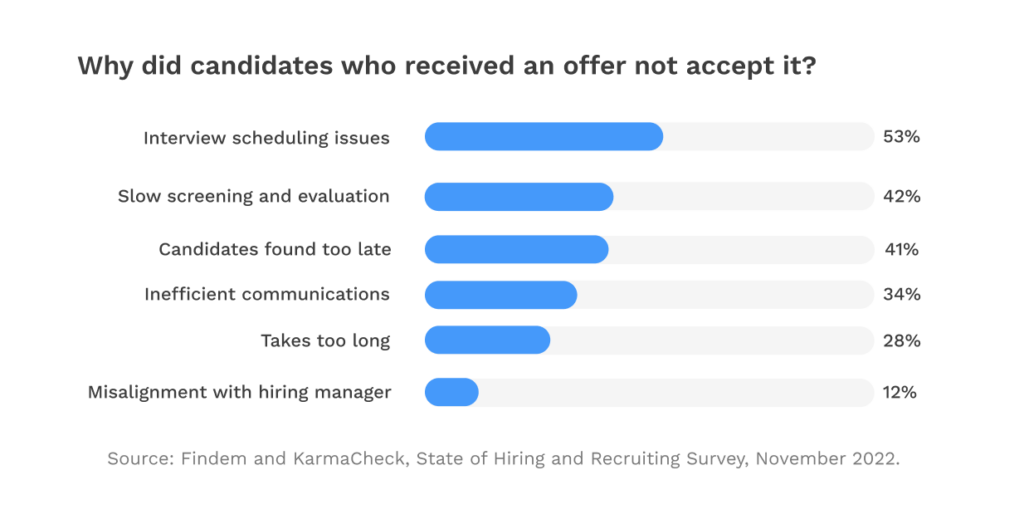Small and midsize businesses (SMBs) face significant hiring challenges in today’s competitive job market. A recent global talent solutions and consulting firm Robert Half study revealed vital obstacles.
The findings offer critical insights to help SMBs attract and retain top talent.
Meeting salary expectations is one of the most challenging hurdles. Nearly half of SMB hiring managers need help with offering competitive pay. Candidates expect salaries that align with market trends, often exceeding what SMBs can afford.
Businesses need to adapt to stay competitive. Using resources like the 2025 Robert Half Salary Guide can help. It enables SMBs to benchmark salaries and offer fair compensation.
Another pressing issue is the need for more skilled talent. Over 40% of managers said they needed help finding candidates with the required skills. This problem has worsened due to rapid technological advancements and specialized skill demands.
The need for more skilled workers impacts productivity. SMBs may lose ground to competitors with more robust hiring strategies. Therefore, addressing this gap should be a priority for small and midsize organizations.
Hiring delays also create challenges. About 40% of hiring managers lose candidates to competitors due to a slow process. Prolonged hiring cycles often discourage top candidates, who prefer swift decision-making.
The consequences of delays are severe. They lead to heavier workloads for current employees. Over time, this increases burnout and turnover rates.
In addition to these problems, finding the right cultural fit poses difficulties. More than 40% of SMBs anticipate needing help identifying candidates who match their workplace values.

A disconnect in cultural alignment can disrupt team dynamics and lower morale.
SMBs need practical solutions to tackle these issues. Robert Half outlines four strategies that businesses can implement. Each approach focuses on leveraging SMBs’ unique strengths while addressing common pitfalls.
First, companies should promote their non-salary benefits. While salary is crucial, it’s not the only factor candidates consider. Highlighting workplace strengths, such as flexible work options and career growth opportunities, can attract top talent.
Showcasing company values can also set SMBs apart. Clear messaging about culture and benefits on websites, social media, and job postings creates a strong employer brand.
Candidates often value these aspects as much as financial compensation.
Streamlining the hiring process is another essential step. SMBs have an advantage here compared to larger organizations. Fewer stakeholders and less bureaucracy allow for quicker decision-making and offer extensions.
Businesses should use this flexibility to their benefit. Reducing delays helps retain candidates who might otherwise accept competing offers. A swift hiring process signals decisiveness and respect for the candidate’s time.
Adopting flexibility in candidate requirements can also yield results. High-potential candidates might need more ideal qualifications but can still succeed with training.
Contract workers can bridge immediate skill gaps. They provide short-term support while businesses search for permanent team members. This strategy balances urgent needs with long-term growth.
Finally, partnering with specialized recruiters is an intelligent move. Recruiters understand industry trends and have access to broader talent pools. They can effectively market SMBs and connect them with skilled candidates.
These strategies address hiring challenges and build resilience. By emphasizing their strengths, SMBs can differentiate themselves in a crowded market and improve their ability to compete for top talent.
The hiring landscape is shifting rapidly. Candidate expectations continue to evolve, driven by changes in work culture and industry demands.

However, businesses that embrace proactive strategies will thrive. Offering competitive salaries, highlighting cultural strengths, and streamlining processes can make a significant difference.
By focusing on these areas, SMBs position themselves as desirable employers.
In the current hiring market, every advantage counts. Losing skilled workers to competitors or failing to attract talent can hurt growth. With careful planning and strategic investments, SMBs can overcome these obstacles.
Robert Half’s research highlights not just the challenges but also the opportunities available. SMBs can use these insights to refine their recruitment strategies, enhancing their ability to hire, retain, and grow talented teams.
Adaptation is critical in today’s job market. Businesses that align with evolving trends and candidate expectations gain a competitive edge. Proactive measures ensure that SMBs remain strong players in their industries.
While the road ahead is challenging, it still needs solutions. Robert Half’s strategies provide a clear roadmap for SMBs. They help businesses navigate hiring complexities and secure a brighter future.
To succeed, SMBs must act now. Delaying action risks further losses in productivity and team morale. A proactive approach ensures they stay ahead in an evolving hiring landscape.
Recruiting the right talent takes effort, but the rewards are worth it. Building a capable, aligned team strengthens a company’s foundation. For SMBs, the time to adapt and innovate is today.
Addressing salary pressures, skill shortages, and hiring delays can help businesses overcome these challenges. With the right focus, they can create opportunities to thrive in a competitive market.
The future belongs to those who prepare for it now.
